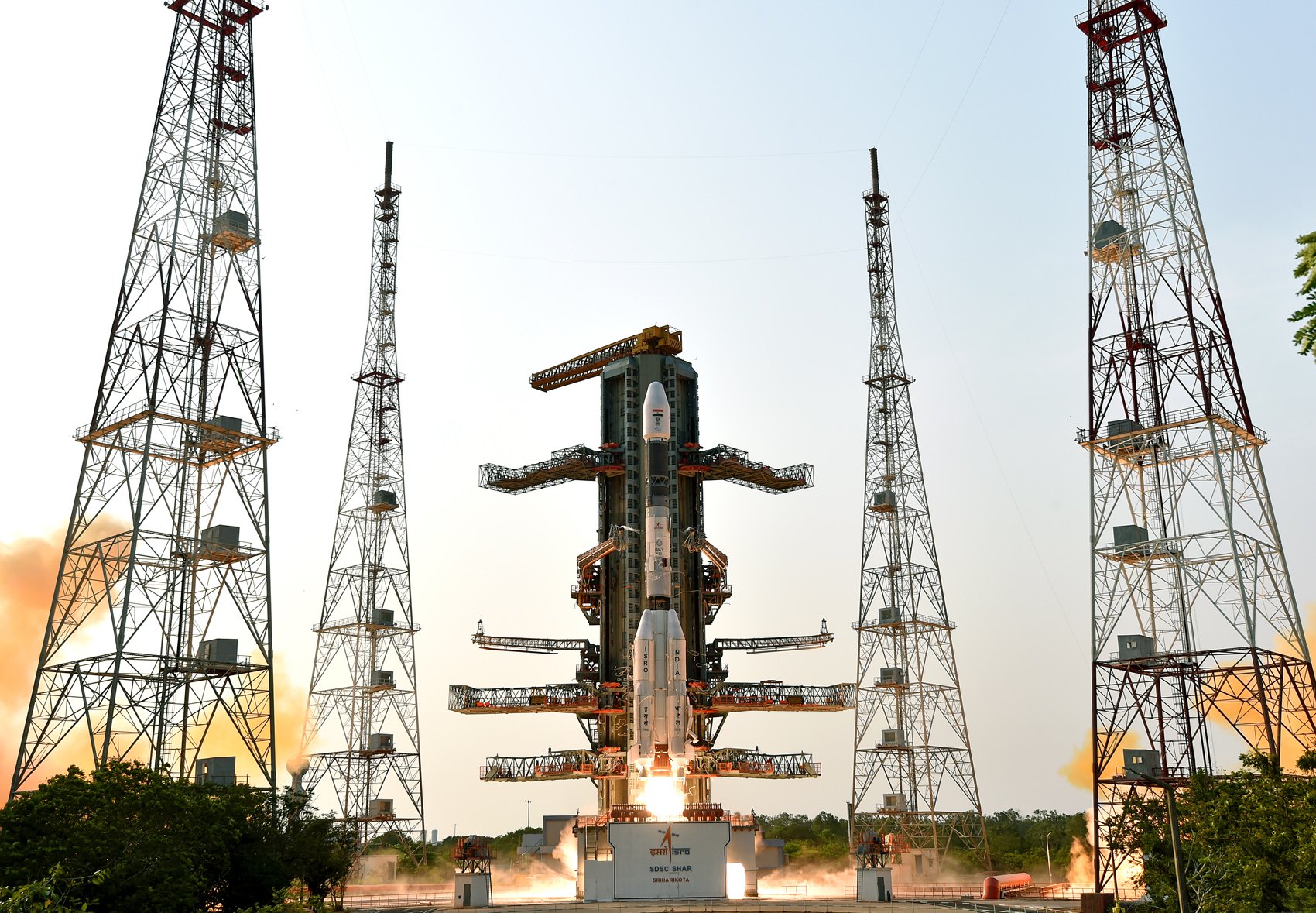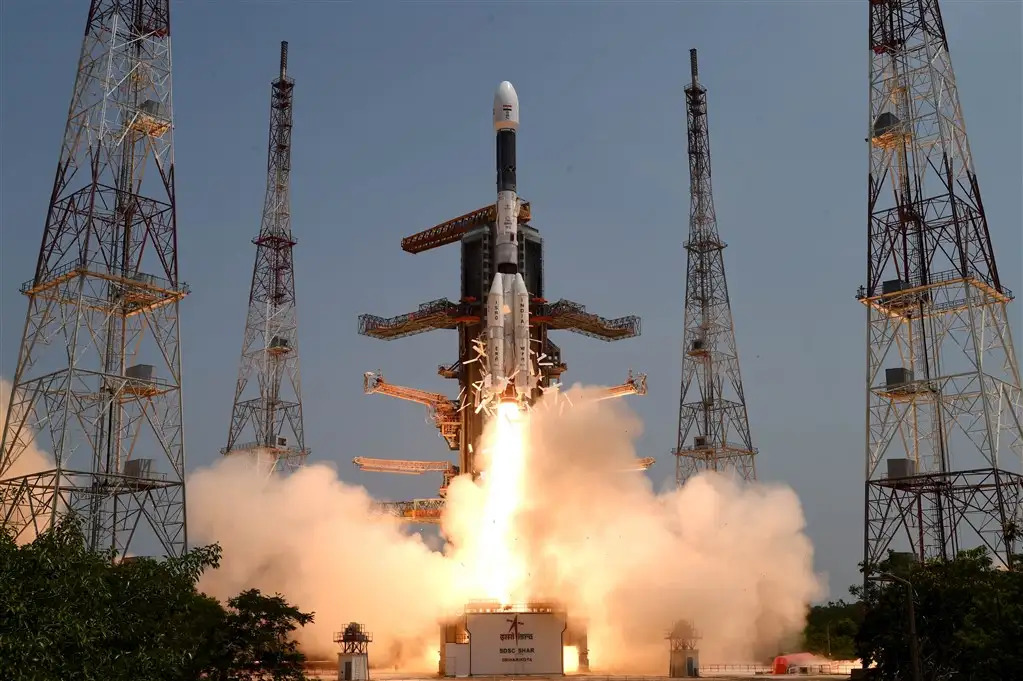
GSLV Mk II
ActiveIndian Space Research Organization (ISRO)
April 15, 2010
Description
Geosynchronous Satellite Launch Vehicle Mark II (GSLV Mk II) is the largest launch vehicle developed by India, which is currently in operation. This fourth generation launch vehicle is a three stage vehicle with four liquid strap-ons. The indigenously developed cryogenic Upper Stage (CUS), which is flight proven, forms the third stage of GSLV Mk II. From January 2014, the vehicle has achieved four consecutive successes.
Specifications
-
Max Stage
3 -
Length
49.0 m -
Diameter
2.8 m -
Fairing Diameter
― -
Launch Mass
401.0 T -
Thrust
7420.0 kN -
Apogee (Sub-Orbital)
40000.0 km
Family
-
Name
GSLV Mk II -
Family
― -
Variant
― -
Alias
― -
Full Name
GSLV Mk. II
Payload Capacity
-
Launch Cost
― -
Low Earth Orbit
― -
Geostationary Transfer
Orbit
2500.0 kg -
Direct Geostationary
― -
Sun-Synchronous Capacity
―
Indian Space Research Organization
Government
Chairman: V. Narayanan
ISRO 1969The Indian Space Research Organisation (ISRO) is the space agency of the Government of India headquartered in the city of Bangalore. Its vision is to "harness space technology for national development while pursuing space science research and planetary exploration."
Upcoming Spaceflights
GSLV Mk II | IRNSS-1L (NVS-03)
Indian Space Research Organization | IndiaSatish Dhawan Space Centre, India
TBD December, 2025
Status: To Be Determined
Mission:
This is a replacement satellite for the Indian Regional Navigation Satellite System. The constellation will provide India with an alternative to GPS and will be used for military and civilian use. Located at a geosynchronous orbit, the system will be operated by the Indian government.
Geostationary Transfer OrbitGSLV Mk II | GISAT-1A (EOS-05)
Indian Space Research Organization | IndiaSatish Dhawan Space Centre, India
TBD March, 2026
GSLV Mk II | GSAT-32
Indian Space Research Organization | IndiaSatish Dhawan Space Centre, India
TBD June, 2026
GSLV Mk II | NISAR (NASA-ISRO Synthetic Aperture Radar)
Indian Space Research Organization | IndiaSatish Dhawan Space Centre, India
July 30, 2025, 12:10 p.m.
Status: Launch Successful
Mission:
The NASA-ISRO Synthetic Aperture Radar, or NISAR satellite, will use advanced radar imaging to map the elevation of Earth's land and ice masses 4 to 6 times a month at resolutions of 5 to 10 meters. It is designed to observe and measure some of the planet's most complex natural processes, including ecosystem disturbances, ice-sheet collapse, and natural hazards such as earthquakes, tsunamis, volcanoes and landslides. Under the terms of the agreement, NASA will provide the mission's L band synthetic aperture radar (SAR), a high-rate telecommunication subsystem for scientific data, GPS receivers, a solid-state recorder, and a payload data subsystem. ISRO will provide the satellite bus, an S band synthetic aperture radar, the launch vehicle, and associated launch services.
Sun-Synchronous OrbitGSLV Mk II | IRNSS-1K (NVS-02)
Indian Space Research Organization | IndiaSatish Dhawan Space Centre, India
Jan. 29, 2025, 12:53 a.m.
Status: Launch Successful
Mission:
This is a replacement satellite for the Indian Regional Navigation Satellite System. The constellation will provide India with an alternative to GPS and will be used for military and civilian use. Located at a geosynchronous orbit, the system will be operated by the Indian government.
Geostationary Transfer OrbitElectron
The Nation God Navigates (iQPS Launch 5)
Rocket Lab Launch Complex 1B - Rocket Lab Launch Complex 1, Mahia Peninsula, New ZealandSynthetic aperture radar Earth observation satellite for Japanese Earth imaging company iQPS.
Ariane 62
Sentinel-1D
Ariane Launch Area 4 - Guiana Space Centre, French GuianaSentinel-1D carries an advanced radar technology to provide an all-weather, day-and-night supply of imagery of Earth’s surface as part of the Sentine…
Long March 7A
Unknown Payload
201 - Wenchang Space Launch Site, People's Republic of ChinaDetails TBD.
LVM-3 (GSLV Mk III)
CMS-03 (GSAT-7R)
Satish Dhawan Space Centre Second Launch Pad - Satish Dhawan Space Centre, IndiaCommunications Satellite for the Indian Navy, replacing GSAT-7 for secure real-time links between Indian warships, submarines, aircraft, and shore-ba…
Falcon 9
Bandwagon 4 (Dedicated Mid-Inclination Rideshare)
Space Launch Complex 40 - Cape Canaveral SFS, FL, USADedicated rideshare flight to a mid-inclination orbit with dozens of small microsatellites and nanosatellites for commercial and government customers.


